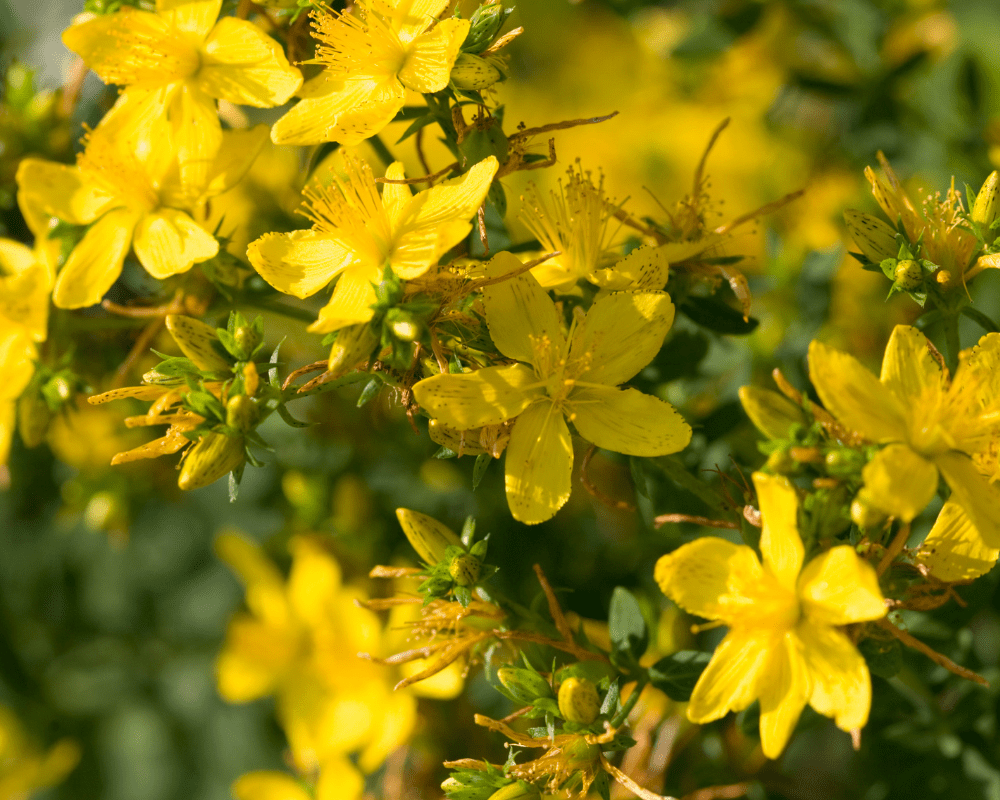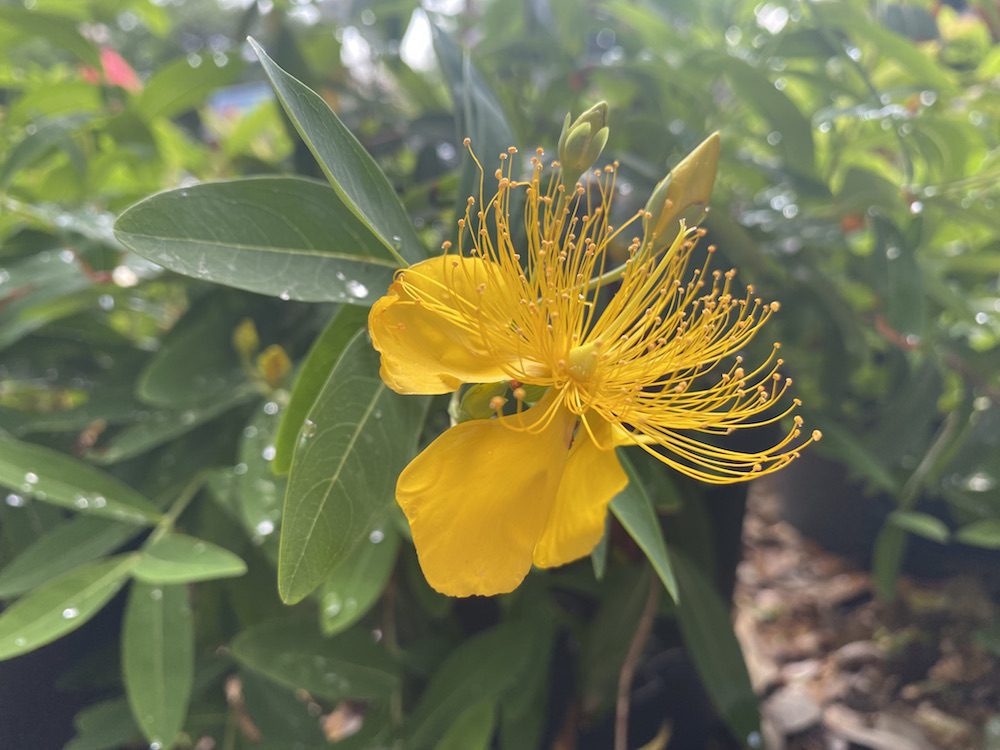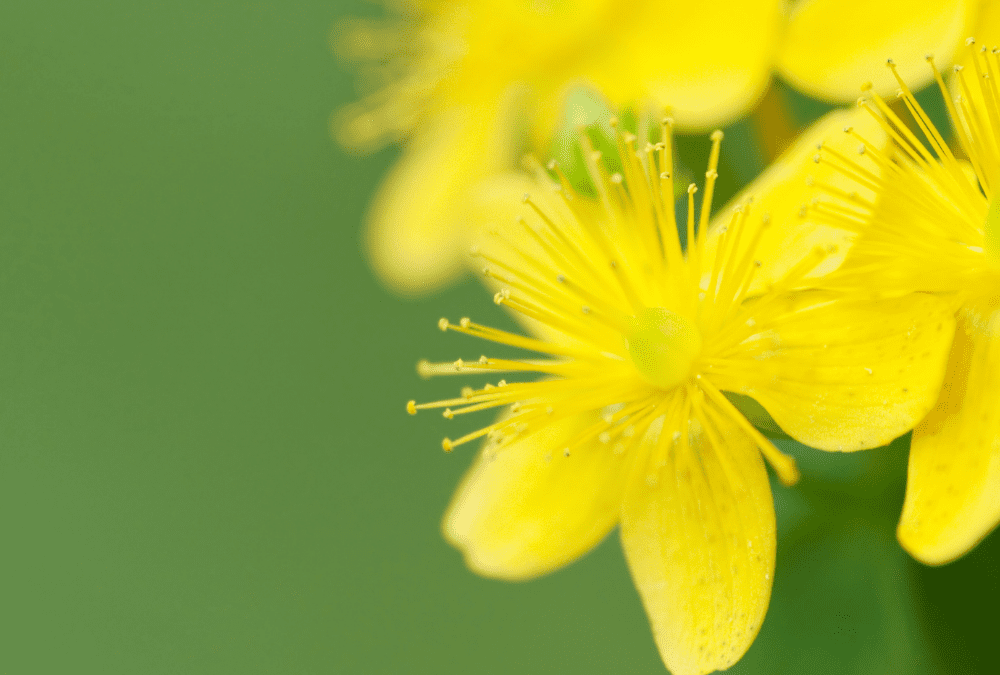About St. John’s Wort
St. John’s Wort is a low-growing, deciduous shrub that is a fantastic option for homeowners looking for flowering shrubs for front borders, mass plantings (makes a great display), groundcovers (certain varieties), and also container options. While St. John’s Wort is classified as a deciduous shrub, through mild winters it may stay evergreen. The branches are dense, providing full coverage on the shrub. The branches fill out all the way to the ground so you won’t feel the need to buy a bunch of plants to cover up any exposed straggly limbs or trunks because there are none.
There are multiple varieties of St. John’s Wort that you may come across. In general, most St John’s Wort shrubs grow to the height and width as noted in the “Quick Look” section below, but you may also be able to find smaller growing versions as well as larger. All St. John’s Wort shrubs can be expected to put out a beautiful display of buttercup-yellow flowers early summer to early fall. Bees will collect pollen from the fiber optic centers. The berries that develop after the blooms fade range from cream to red depending on variety. There is no real known issue with pests or disease that affects St. John’s Wort

Planting St. John’s Wort
Though not particular of soil type, and once established is adaptable to both dry and moist soil, the soil itself must drain well and not collect standing water. When planting more than one St. John’s Wort, if you want a hedge, take in consideration the variety’s full size at maturity then measure out 12”-18” from there to plant the next shrub.
St. John’s Wort can also be planted as a stand alone specimen in the landscape. The spreading nature of St. John’s Wort provides a beautiful display in containers. We advise using it as the “thriller” in potted displays with smaller plants that spill over tucked in around the edges.

St. John’s Wort Quick Look
- Semi-evergreen/deciduous shrub
- Hardiness Zone: 5-9
- Light Exposure: Filtered sun, part sun, part shade
- Soil Type: Not particular, but needs to be well-draining
- Average Growth Habit: Round and bushy, 24”- 36” tall x wide depending on variety
- Benefits: Medicinal properties, pollinator attractor
- Pest and Disease: no noted issues
- Flowers: Buttercup-yellow blooms summer to fall
- Berries: Cream or red berries in fall

~The Happy Gardener, Lisa Mulroy

